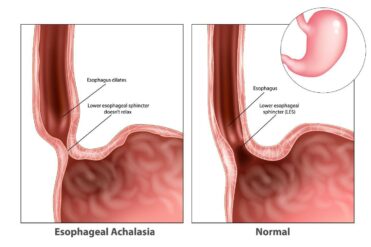What is Achalasia?
Achalasia is a rare esophageal disorder that affects the ability of the lower esophageal sphincter (LES) to relax, leading to difficulty in swallowing and the sensation of food getting stuck. Fortunately, there are several treatment options available to manage achalasia and improve the quality of life for those affected. In this article, we will explore the various treatment approaches, their effectiveness, and potential risks associated with each method.
1-Balloon Dilation:
One of the primary treatment methods for achalasia is balloon dilation, also known as pneumatic dilation. During this procedure, a thin tube with a balloon attached to its tip is inserted into the esophagus. The balloon is then inflated, stretching the LES muscle and helping it to relax. Balloon dilation has been found to be effective in relieving symptoms in many achalasia patients, with success rates ranging from 70 to 90 percent. However, there is a risk of esophageal perforation, which occurs in about 5 percent of cases and may require further intervention.
2-Surgical Myotomy:
Surgical myotomy involves cutting the muscles of the LES to allow for better passage of food and liquids into the stomach. Traditionally performed as an open surgery, it is now commonly done laparoscopically, using small incisions and specialized surgical tools. This approach has shown excellent long-term results, with symptom relief achieved in more than 90 percent of cases. However, surgical myotomy is an invasive procedure and carries the usual risks associated with surgery, such as infection and bleeding.
3-Peroral Endoscopic Myotomy (POEM):
A less invasive alternative to surgical myotomy is peroral endoscopic myotomy (POEM). In this procedure, a flexible endoscope is inserted through the mouth and into the esophagus. Using specialized instruments, the muscles of the LES are cut from within the esophagus, allowing for easier swallowing. POEM has gained popularity due to its minimally invasive nature and comparable effectiveness to surgical myotomy. However, it is a technically demanding procedure and requires expertise in advanced endoscopy.
4-Botulinum Toxin Injection:
Botulinum toxin, commonly known as Botox, can be injected directly into the LES to temporarily paralyze the muscles and relieve symptoms of achalasia. This treatment option is less invasive than other procedures and can provide short-term relief. However, its effects are not permanent, and repeated injections may be necessary. Botulinum toxin injections are generally considered safe, but there is a small risk of unintended spread of the toxin to surrounding muscles, leading to temporary swallowing difficulties.
5-Medications
While there is no medication that can cure achalasia, certain drugs can help manage symptoms and improve esophageal function. Calcium channel blockers, such as nifedipine, can relax the muscles of the LES and facilitate swallowing. Similarly, nitrates, such as isosorbide dinitrate, can help in relieving symptoms. However, the effectiveness of medications varies among individuals, and they may not provide complete relief. Medications are often used as adjunctive therapy or as a temporary measure before considering more invasive treatments.
Conclusion:
Achalasia is a challenging condition that can significantly impact a person’s quality of life. However, with advancements in medical and surgical interventions, effective treatment options are available. Balloon dilation, surgical myotomy, POEM, botulinum toxin injection, and medications all play a role in managing achalasia. Each treatment approach has its own benefits and potential risks, and the choice of treatment should be made based on individual factors, such as the severity of symptoms, patient preference, and

